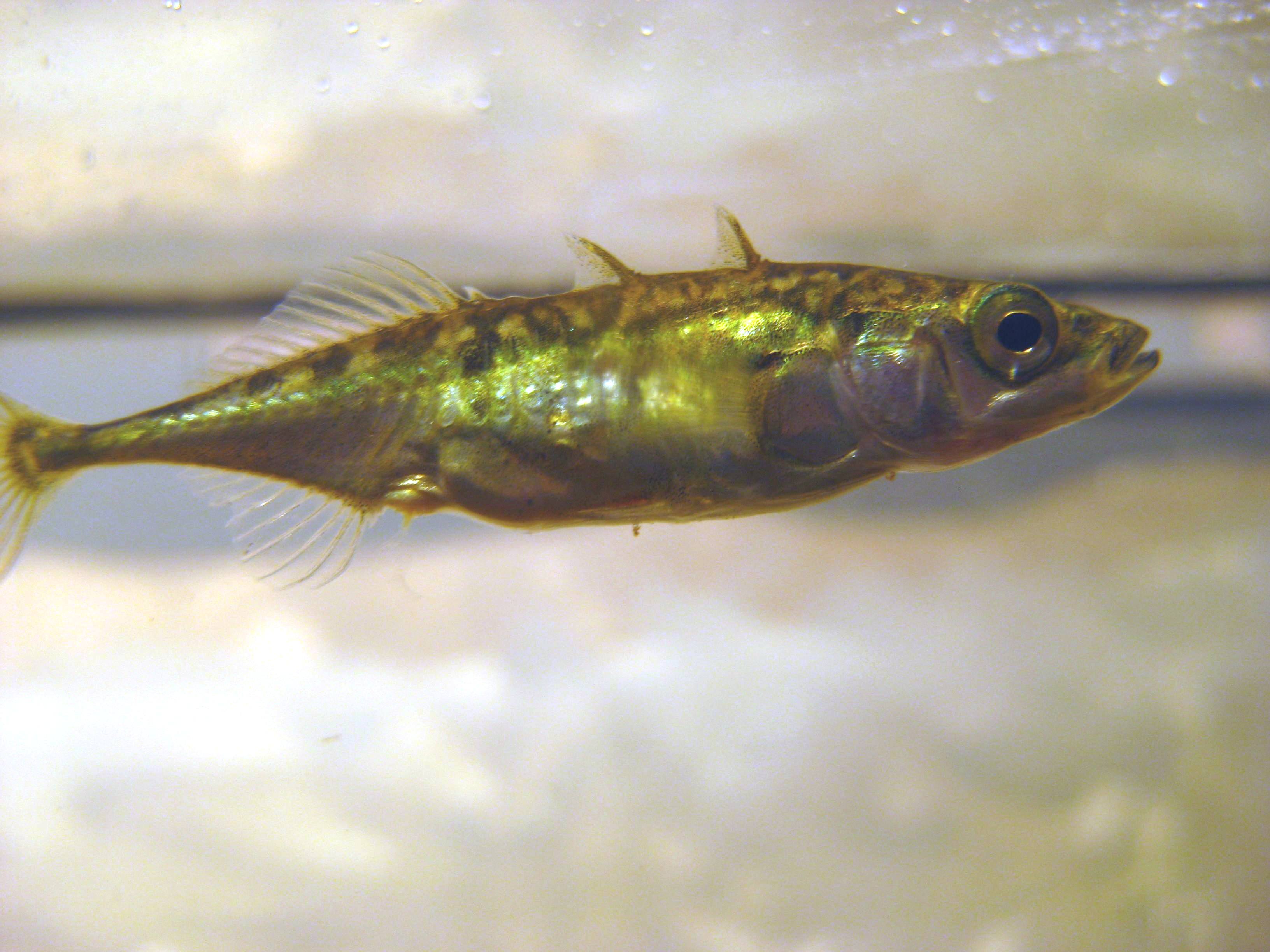©Copyright 2018 GEOSCIENCE RESEARCH INSTITUTE
11060 Campus Street • Loma Linda, California 92350 • 909-558-4548

Haenel Q, M Roesti, D Moser, ADC MacColl, D Berner. 2019. Predictable genome-wide sorting of standing genetic variation during parallel adaptation to basic versus acidic environments in stickleback fish. Evolution Letters 3-1:28-42. Doi:10.1002/ev13.99

Summary. Stickleback fish are present in several lakes on North Uist Island in the Outer Hebrides of Scotland and in the surrounding ocean. The lakes vary in their acidity due to differences in chemistry of the rocks. This study compared the genetic makeup of fish in five acidic lakes on the eastern side of the island, five alkaline lakes on the western side, and fish living in the sea on each side of the island. Fish from the three different habitats have different phenotypes. Marine sticklebacks have three robust dorsal spines and lateral armor plates. Fish from alkaline lakes have reduced spines and armor, and fish from acidic lakes have little or no spines or lateral armor. The question investigated here is whether fish from the same type of habitat are similar because of similar response to natural selection, and whether phenotypic differences are the result of inheritance from marine ancestors with phenotypic differences.
Results showed that marine sticklebacks have similar genetics on both sides of the island, which falsifies the hypothesis that differences of lake fish are due to differences in ancestry. Evidence of selection was found in many locations within the genomes of the fish, corroborating the hypothesis that natural selection has been acting on these fish populations. It appears that natural selection has produced similar effects in lakes with similar chemical properties. Reduction in body armor is probably related to differences in predation and in nutrition. All lake populations probably have lower predation pressure than those in the marine habitat, which would allow reduction in energy expenditure through reduction in body armor. Acidic lakes appear to have lower nutrient availability, which could explain selection for further reduction in armor. Fish from alkaline lakes are genetically more similar to the presumed marine ancestral population than those from acidic lakes. Fish in acidic lakes are genetically different because they have higher numbers of alleles that are rare in the marine population. This indicates that differences among fish from different habitats are caused by selection for different frequencies of alleles already present in the putative ancestral population. No new genes are involved in producing the different phenotypes. This study indicates that the marine population has pre-existing genetic diversity that enabled the stickleback fish to adapt to different local environments in predictable ways.
Comment. The ability to rapidly adapt to local habitats is crucial to survival during dispersal to and through new habitats, and to changes in climate. Adaptation may occur through changes in allele frequencies, as in this case, or, potentially, through epigenetic modifications as shown in numerous recent studies.[1]Importantly, it does not depend on multiple random mutations, which are overwhelmingly of negative effect. Occasionally, a mutation may benefit an organism by disrupting function of a gene that has undesirable effects in a new environment, but this process has obvious limitations over the long term.[2]One possible explanation for this situation is that the Creator endowed species with the capacity to adapt to different local habitats by producing genetic variation before it was needed. This capacity may explain why the stickleback fish is able to adapt to three different aquatic environments (alkaline lakes, acidic lakes, and the ocean) without having to undergo major genetic modifications.
[1]For example, see De Souza, TAJ, 2019. Caenorhabditis elegansas a model to understand the role of epigenetic heritage in microevolution, https://www.grisda.org/caenorhabditis-elegans-role-of-epigenetics-in-microevolution; Brautigam, KJ Vining, C Lafon-Placette et al. 2013. Epigenetic regulation of adaptive responses of forest tree species to the environment. Ecology and Evolution3(2):399-415, doi:10.1002/ece3.461 ; Thorson, JLM, M Smithson, D Beck, I Sadler-Riggleman, E Nilsson, M Dybdahl, MK Skinner. 2017. Epigenetics and adaptive phenotypic variation between habitats in an asexual snail. Scientific Reports2017, 7:14139. Doi:10.1038/s41598-017-14673-6
[2]Behe, MJ. 2019. Darwin Devolves. New York: HarberCollins, https://www.grisda.org/darwin-devolves; Sanford, JC, 2014, Genetic Entropy. London: FMS Publications, https://www.grisda.org/genetic-entropy.